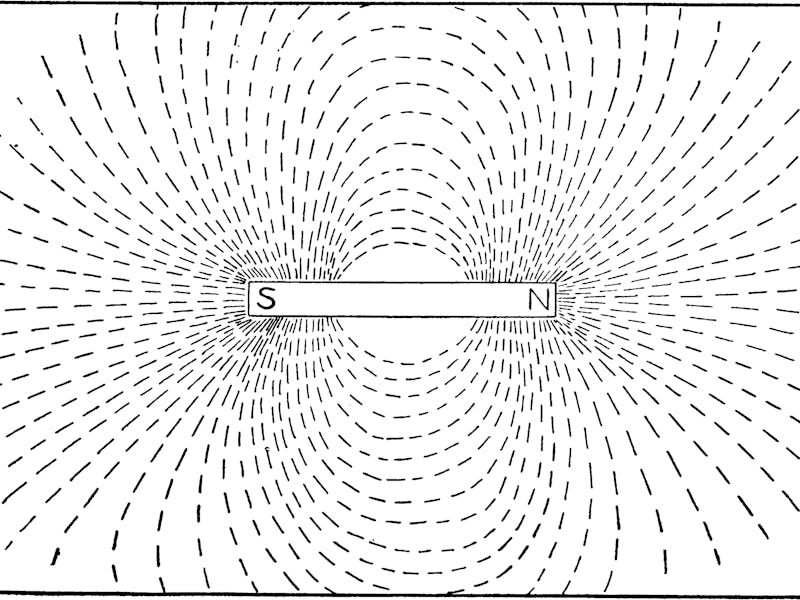Neolithic stone reveals ancient magnetism secret
This isn’t your Mom’s fridge magnet.

Reaching out into the cosmos with invisible tendrils, magnetism is simultaneously otherwordly and mundane.
These forces can pin a photo to your fridge or even billow off Earth’s poles to combat solar wind, and now a new study published in the journal Proceedings of the National Academy of Sciences shows magnetism can help us study the past as well.
Like fingerprints left on glass, pieces of clay or stone hold the memory of Earth’s magnetism from long ago deep inside them. And now, scientists have found a way to reveal these secrets from within pieces of flint — one of history’s most common materials. This includes the oldest magnetic intensity data from the Levantine region to date.
Lisa Tauxe is a professor paleomagnetics at the Univerity of California San Diego and a co-author of the new study. In addition to helping future researchers date historic Levantine sites, studying the magnetism of these materials can also help researchers study what Tauxe calls a “rollercoaster” of magnetic activity on ancient Earth specific to the Levantine region, the location of modern-day Jordan.
“Our oldest specimens suggest field strengths about two-thirds of our present field,” Tauxe tells Inverse. “Then the field gained strength until about 3,000 years ago when it was about two times today’s field. Since then it has decreased on a roller coaster ride to today’s field.”
This rollercoaster ride is known by scientists as the “Levantine Iron Age Anomaly.” Studying such magnetic events may even help us in our own crusade against climate change, other research has suggested.
A picture of one of the team’s archaeological sites — Wadi Fidan 01 — in Arabah Valley, Jordan.
What’s new — While the study of ancient magnetism may not be a household name like carbon dating, Tauxe says this technique is far from new. In the past, it’s been used primarily to study pieces of pottery. This is because pottery is fired at high enough temperatures to take on this electromagnetic fingerprint — or “thermal remanent magnetization.”
“When something cools in a magnetic field, it becomes magnetic with a strength proportional to the field in which it cooled,” Tauxe says.
However, relying on pottery shards as the only source of TMR can be iffy, especially when trying to explore civilizations that pre-date pottery. That’s why Tauxe and colleagues instead focused on a more ubiquitous material: flint.
While flint wasn’t always heated by ancient civilizations, it was sometimes heated to make it easier to break and form into specific shapes, like the point of a spear.
Typically flint wouldn’t be considered useful at all, Tauxe says, because it’s not always heated before use the way pottery is. However, in this study, they developed a method to first determine whether or not flint samples had been fired and then applied the same analysis typically used on pottery to study its magnetism.
Tauxe says that this new approach means the team doesn’t “have to waste our time in the future on flints that were never fired.”
Why it matters — Folding flint into the paleomagnetism catalog could help scientists not only better study the Levantine anomaly but potentially even better understand the lives of these civilizations at large, including how they ate.
These sites are “is important for understanding a number of issues in global archaeology,” write the authors. “Including the origins of the village as a settlement type, the domestication of plants and animals, and the rise of the Mediterranean diet.”
Pottery is a great source for paleomagnetic research, but it tells us nothing about pre-pottery societies. Focusing on flint instead could change that.
How they did it — In their analysis, the team looked at 129 flint samples from archaeological sites across modern-day Jordan dating between 7752 and 5069 BCE.
To determine the intensity of their magnetism, they used something called the IZZI protocol which essentially calls for reheating samples and comparing the intensity of their magnetic fields with the Earth’s current day magnetism.
By comparing the magnetism of these samples to known levels of magnetism across history, this technique can then be used similarly to carbon dating.
What’s next — With the door now open to using flint worldwide as a record of ancient magnetism, some next steps for this research will be to build a more robust idea of how magnetism changed in other regions around the world, Tauxe says.
“In the Middle East, we have a very good idea of what the field did in the past,” says Tauxe. “The archeomagnetic community are working on improving the records from around the world so that it might be applied with increasing confidence elsewhere.”
As for Tauxe, she’s turning her focus to the southwestern US and southeast Asia to start.
Abstract: Constraining secular variation of the Earth’s magnetic field strength in the past is fundamental to understanding short-term processes of the geodynamo. Such records also constitute a powerful and independent dating tool for archaeological sites and geological formations. In this study, we present 11 robust archaeointensity results from Pre-Pottery to Pottery Neolithic Jordan that are based on both clay and flint (chert) artifacts. Two of these results constitute the oldest archaeointensity data for the entire Levant, ancient Egypt, Turkey, and Mesopotamia, extending the archaeomagnetic reference curve for the Holocene. Virtual Axial Dipole Moments (VADMs) show that the Earth’s magnetic field in the Southern Levant was weak (about two-thirds the present field) at around 7600 BCE, recovering its strength to greater than the present field around 7000 BCE, and gradually weakening again around 5200 BCE. In addition, successful results obtained from burnt flint demonstrate the potential of this very common, and yet rarely used, material in archaeomagnetic research, in particular for prehistoric periods from the first use of fire to the invention of pottery.